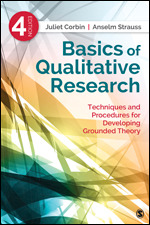Basics of Qualitative Research
Techniques and Procedures for Developing Grounded Theory
- Juliet Corbin - San Jose State University, USA
- Anselm Strauss
“The subject of the book is timely, important, and relevant. The content is laid out in a logical and organized manner and written in a style that is easy to understand.”
“[This book] provides an overview as well as depth into some of the techniques used in Grounded Theory studies, from the formation of research questions on through how to disseminate the work. A beginning researcher wanting to conduct a Grounded Theory study would find parts of this book helpful.”
A useful supplemental source for graduate students.
I rarely have students who select grounded theory for their dissertation research, and so decided not to adopt for each student. However, I do recommend this text for those who do plan GT


 Sage College Publishing
Sage College Publishing
